Volcanic cones raising from the dense jungle, bumpy backroads leading to booming waterfalls, miles of zipline cables stretching above the rainforest, and hidden beaches — Costa Rica is the ultimate playground for those seeking adventure and relaxation. The Osa Peninsula, a sliver of land located in the southwestern corner of the country, is among the country’s most remote and biodiverse regions — a Pacific enclave that allows for slow travel and cultural immersion without the crowds. Eco-lodge luxury notwithstanding, a trip here feels like stepping into Jurassic Park. Here’s how to explore the Osa Peninsula and find the perfect balance between relaxation and adrenaline.
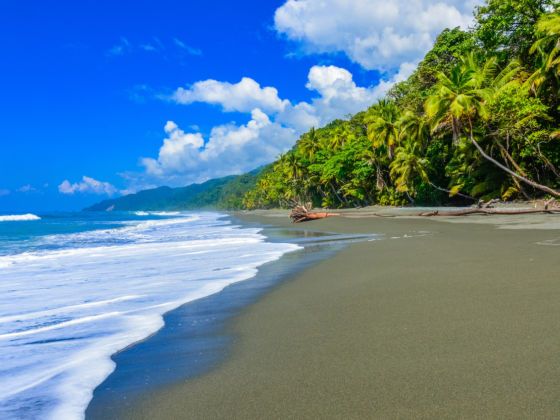

The Osa Peninsula Is Costa Rica's Last Wild Frontier
Unwind at a luxury eco-lodge.
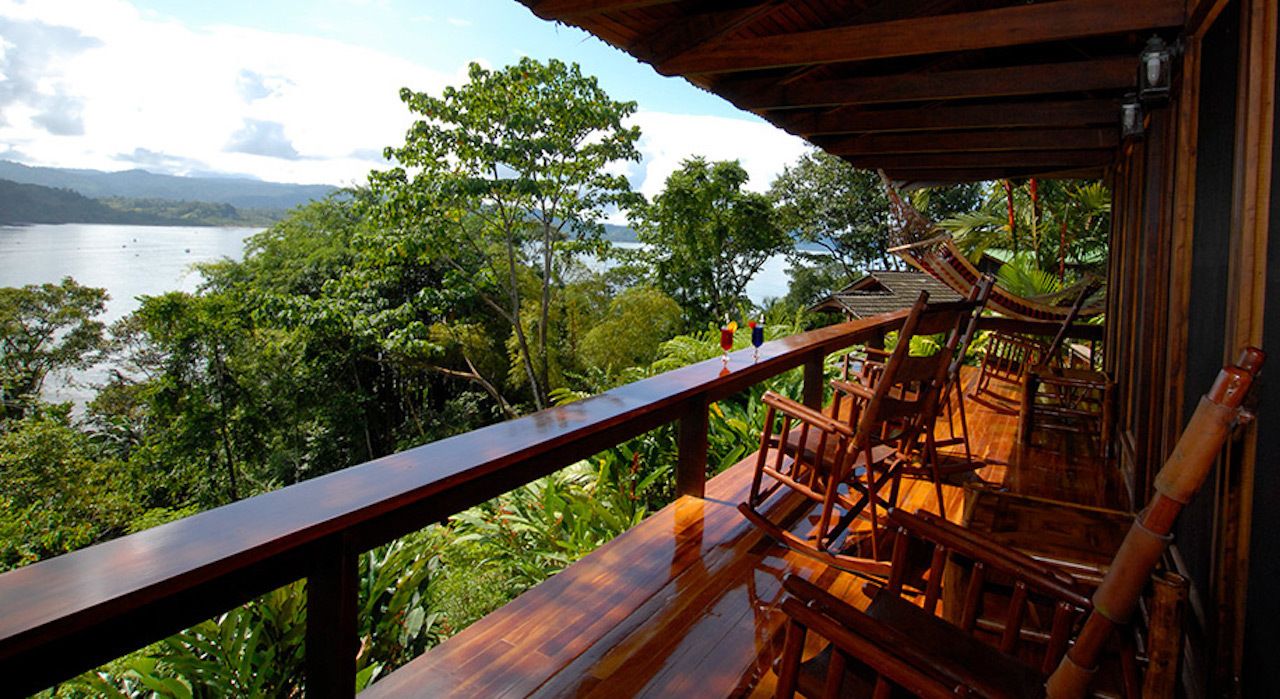
Photo: Aguila de Osa
Tourism in Costa Rica is all about sustainability and getting in touch with nature. Travelers will discover plenty of eco-lodges, each one implementing those values in their own creative way. Playa Cativo Lodge, on the coastline of Piedras Blancas National Park, is all about organic gourmet meals. The 1,000-acre property is home to a five-star hotel with its own permaculture garden where guests can acquaint themselves with all the fresh produce that will meet them on their dinner plate, from heirloom tomatoes to rosemary. The lodge is surrounded by a private beach where you can paddleboard, practice yoga, or simply zen out listening to the crashing waves. Staying at Playa Cativo is an invitation to be fully present and let go of stress, plunging into the private pool that accompanies your bungalow or meditating on how many shades of green you can count in the manicured garden.
On the peninsula’s northern tip, Águila de Osa is another boutique eco-hotel where guests will find themselves on the very edge of the Corcovado National Park’s rainforest, overlooking the lush hillside of Drake Bay. The prime-time activities here include napping in a hammock, horseback riding at sunset, or embarking on a guided night hike to get acquainted with the secret life of the property’s fluorescent frogs. Aguila de Osa lies right next to Caño Island Biological Reserve where marine life enthusiasts can fish, snorkel, and scuba dive.
Get up-close and personal with whales and dolphins.
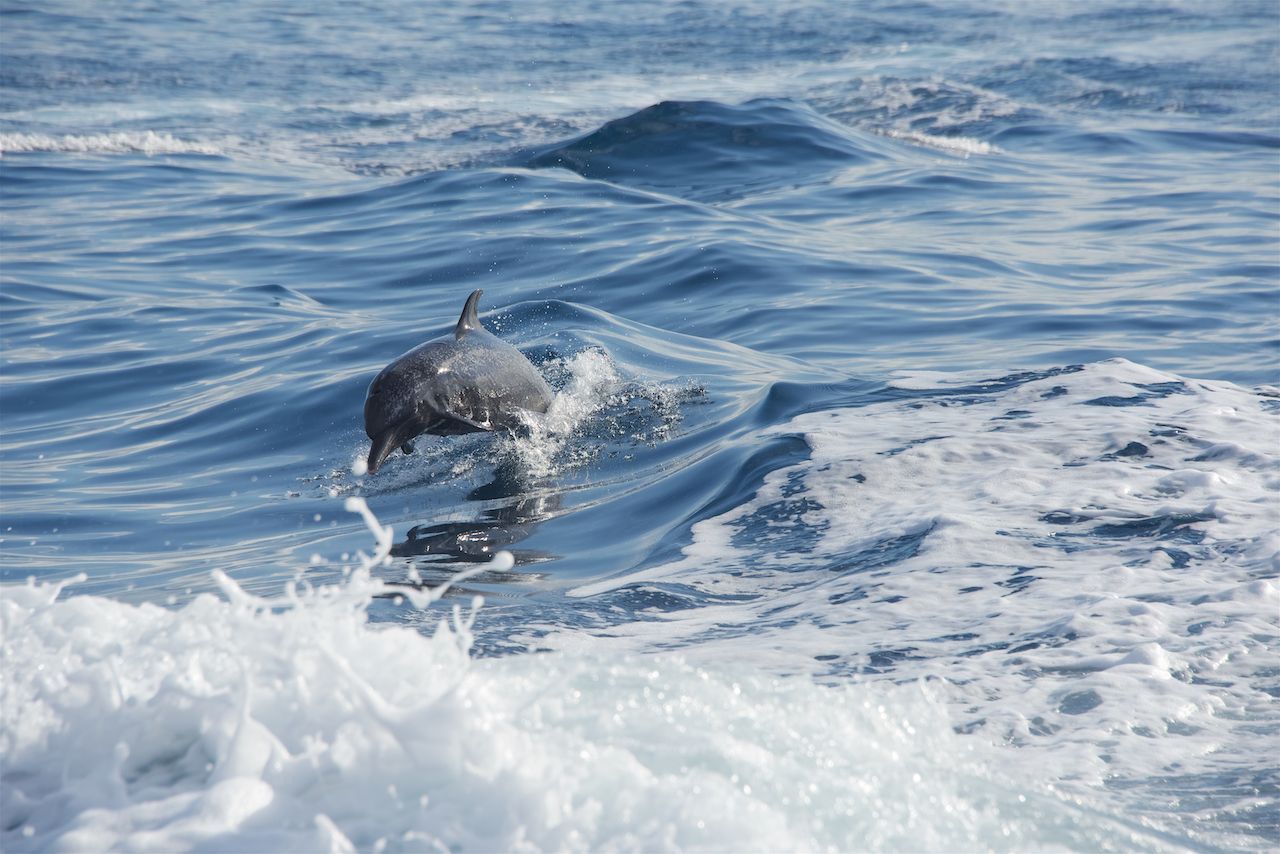
Photo: PAUL ATKINSON/Shutterstock
Dubbed the last remaining “wild” side of Costa Rica, travelers to the Osa Peninsula often have the ability to see humpback whales and bottlenose dolphins in their natural habitat. While tours can be hit or miss, the chances to actually observe the marine mammals on the Osa are higher thanks to local tourism that’s geared towards eco-enthusiasts versus the selfie-stick-loving crowds. The best time to go on a whale- and dolphin-watching trip is from July to October.
Have a picnic on an untouched beach.
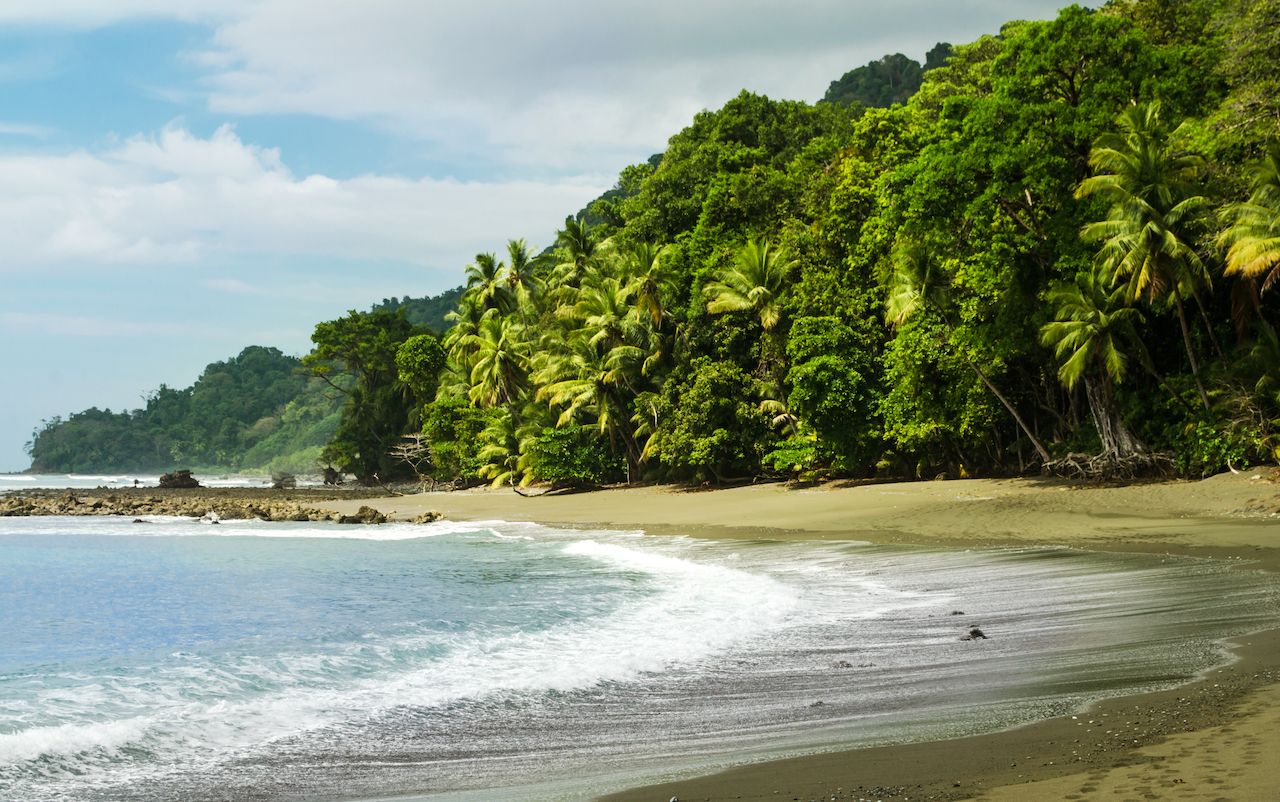
Photo: Malgorzata Drewniak/Shutterstock
Sometimes the ideal version of paradise is a hearty lunch on an untouched beach surrounded by turquoise water with no devices in sight. The Osa has plenty of quiet spots to explore, stretching from Palma to Agujas and Puerto Jiménez all the way down to the southern tip of the peninsula at Ojo de Agua. All of those can be navigated by boat for an afternoon of beach hopping.
Kayak with mangroves or explore underwater marine life.
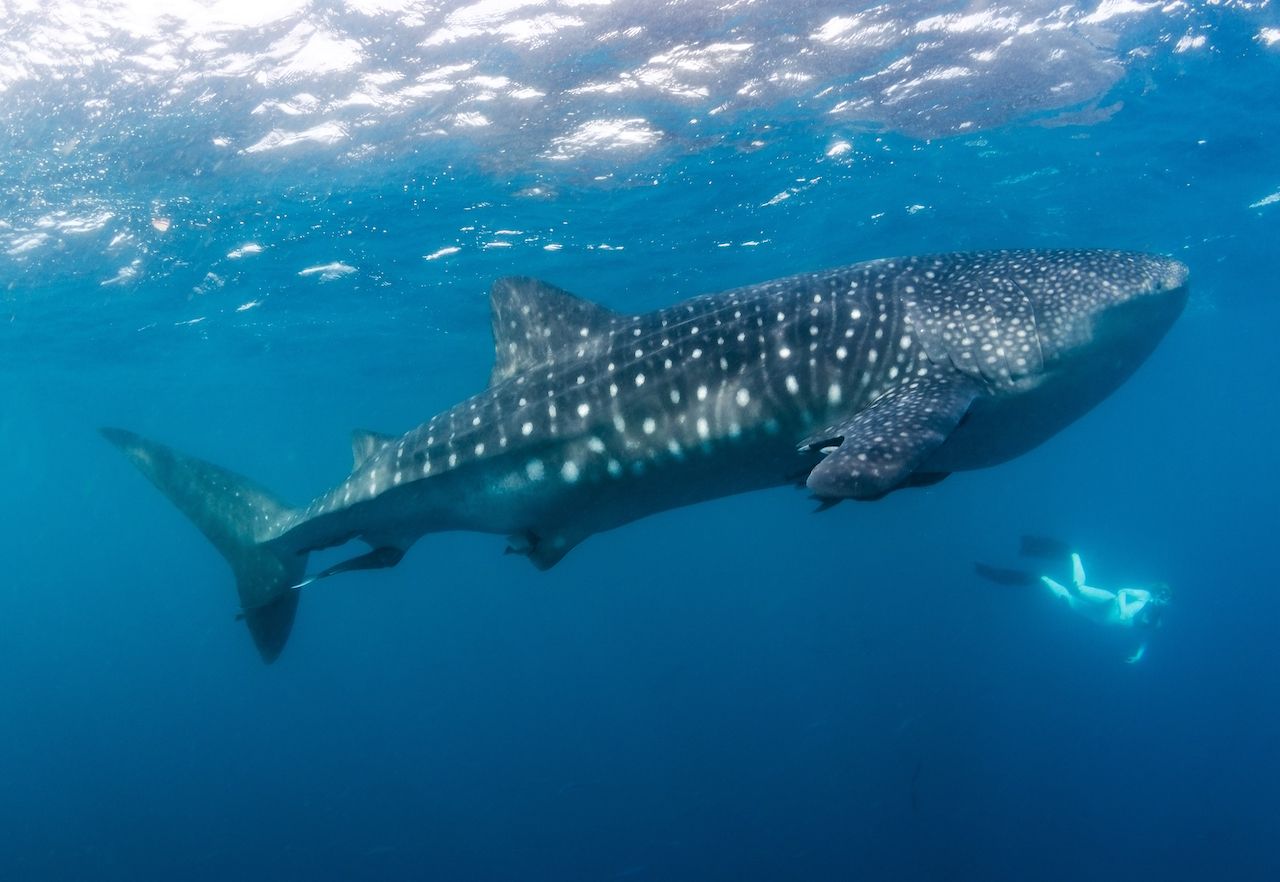
Photo: Joost van Uffelen/Shutterstock
The Osa Peninsula is the home to dozens of mangroves where time seems to grind to a halt. Lazily making their way in a kayak along the tranquil waters is a welcome relaxation to those who want to get away from civilization for a moment. The only possible reason to jump into the present from this state of zen would be to check out a crocodile sunbathing on a nearby rock or watch a heron grab unsuspecting mahi-mahi out of the water for lunch.
The marine life around the Osa Peninsula is just as rich as the terrestrial wildlife. Caño Island Biological Marine Reserve is home to manta and mobula rays, white sharks, Moorish idols, sea turtles, moray eels, all surrounded by an unspoiled reef. This is an excellent spot to dive, snorkel, and do underwater photography.
Discover hundreds of species at Corcovado National Park.

Photo: Jeroen Mikkers/Shutterstock
Known for being the most biologically diverse place in a country that already boasts among the richest selection of animal and plant varieties on the planet, Corcovado National Park is the ultimate playground for the natural explorer. The park is home to over 140 mammals, including 40 endangered jaguars, 71 reptiles, four types of venomous snakes, and 40 types of freshwater fish. Visiting with a certified, wildlife-telescope-carrying guide is recommended in order to get the most out of your visit and ensure absolute safety. Walking along the Sirena trail, observe howler and spider monkeys playfully jump from one palm tree to the next, tapirs frolicking, and a scarlet macaw flashing by. To explore the plant and bird kingdom, the two-mile-long San Pedrillo trail offers a rich repertoire of hawks, toucans, manakins, trogons, honeycreepers, and more. The other two trails — La Leona and Los Patos — are more low-key and are the ideal route for those who seek peace and quiet.
Fly above the rainforest and rappel down towering waterfalls.
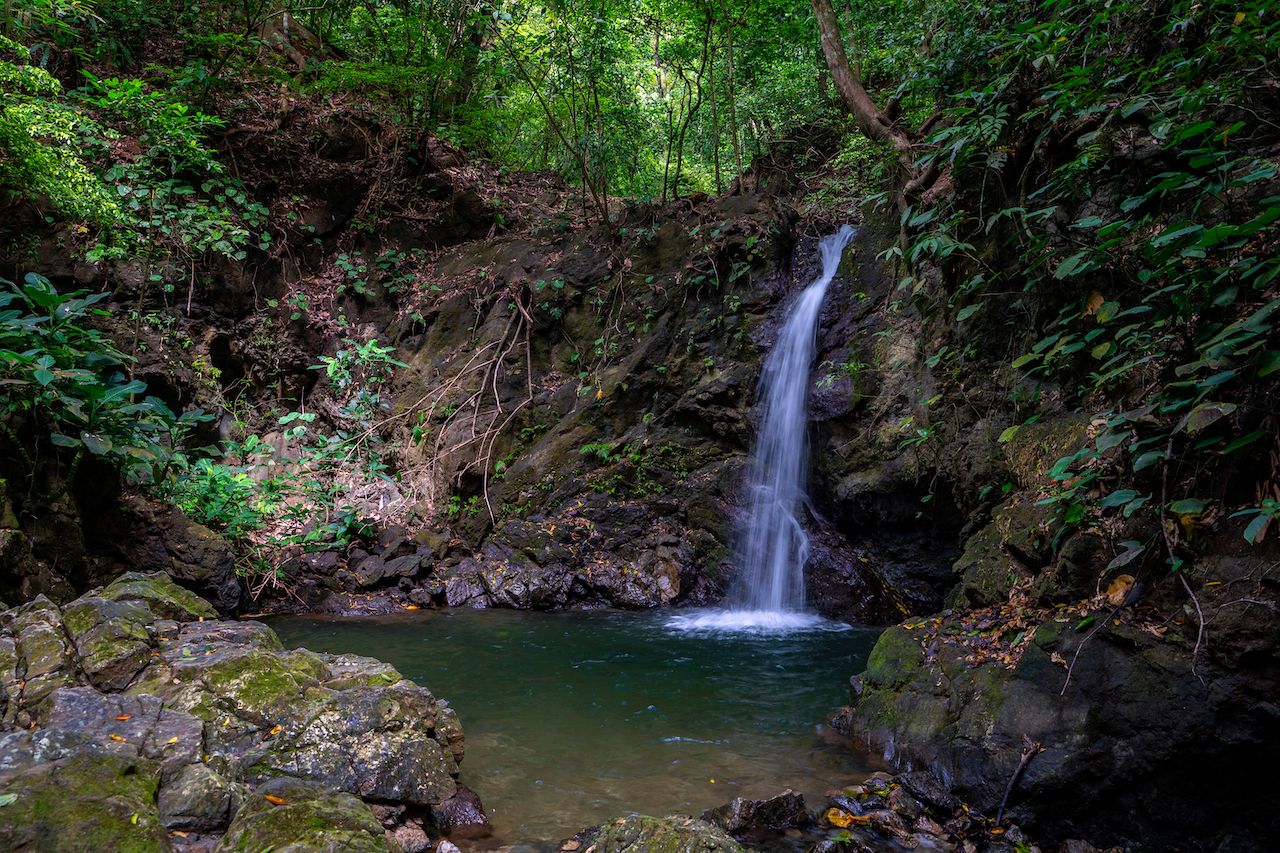
Photo: MyTravelCurator/Shutterstock
In true Costa Rica fashion, instead of walking through the rainforest, you can actually explore it from above by flying, climbing, and rappelling. The Adventure Park & Hotel Vista Golfo gets your adrenaline pumping with its three-hour Mega Mix Adventure Tour. You’ll combine feats such as walking across 17 tight rope formations made of logs and poles, swinging on the Tarzan swing, zip-lining over eight stations, and the 2,460-foot unobstructed “Superman” flight above the canopy.